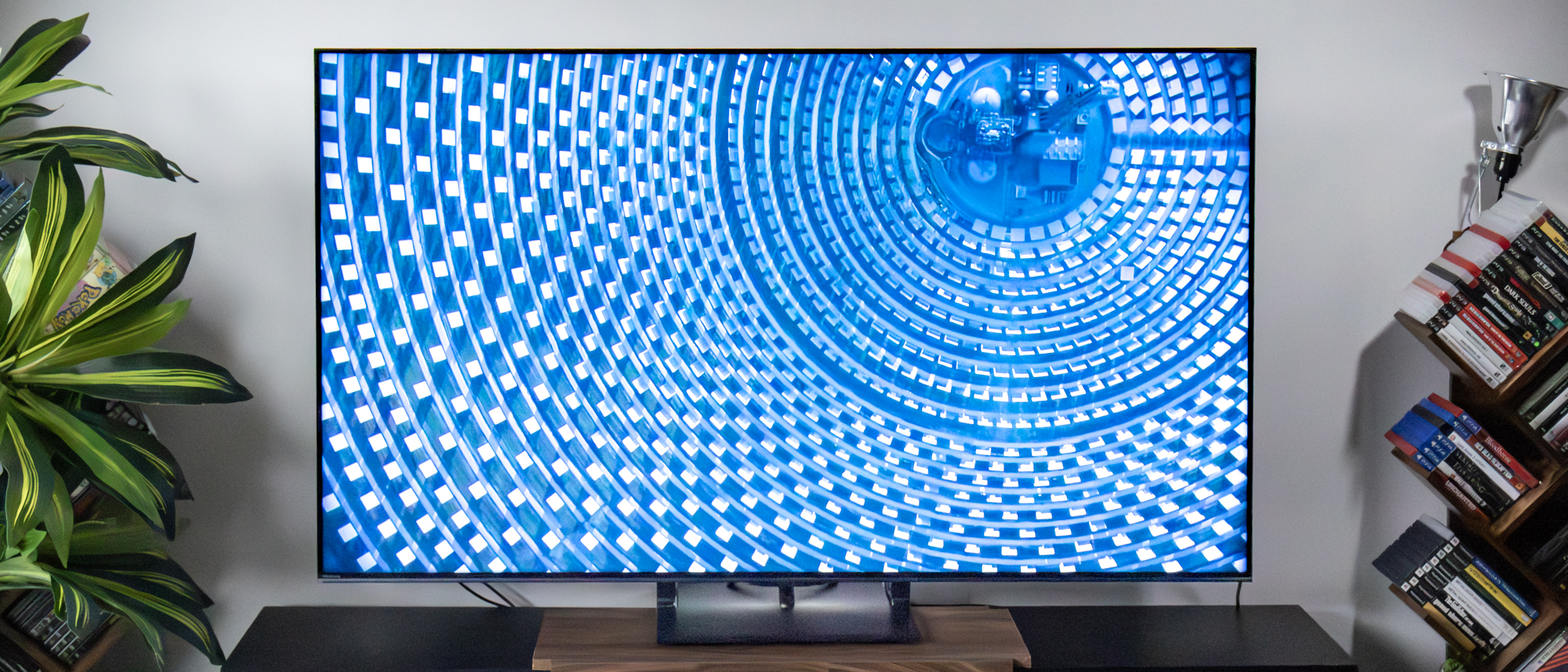Tom's Guide Verdict
The Hisense U75QG offers impeccable brightness and stellar HDR performance for the price. It’s also equipped with tons of gaming features that make it perfect for PS5 and PC players alike. It still falls prey to similar issues plaguing Hisense LCD TVs, such as poor off-axis viewing and a reflective panel.
Pros
- +
Incredible HDR performance
- +
Bonkers brightness
- +
Tons of gaming features
- +
Budget price
Cons
- -
Middling audio
- -
Reflective screen
- -
Poor off-axis viewing
Why you can trust Tom's Guide
Price: $799
Screen size: 65 inches
Model: Hisense 65U75QG
Resolution: 3,840x2,160
HDR: Dolby Vision, HDR10, HDR10+, HLG
Refresh rate: 120Hz native (up to 165Hz)
Ports: 4x HDMI 2.1
Audio: 60W 2.1.2 Channel
Smart TV software: Google TV
Size (without stand): 56.9 x 33.7 x 3 inches
Weight (without stand): 47 pounds
I’ve reviewed Hisense’s mid-range Mini-LED TVs for three years running, but the Hisense U75QG Mini-LED TV is one of the most exciting and impressive I’ve seen so far. I’ve now spent about two weeks with this TV and loved every second with it.
For movie lovers, the U75QG makes both HDR and non-HDR films shine thanks to its spectacular brightness levels, while gamers will appreciate its robust set of gaming features built on its 165Hz refresh rate, offering PC and console players excellent performance with low input latency.
However, the Hisense U75QG isn’t perfect. It falls into the same trap as the Hisense U8QG, offering poor off-axis viewing on a panel that’s prone to reflections in brighter rooms. Unlike the U8QG, this mid-range Mini-LED TV also has a rather middling speaker that lacks clarity.
Despite these complaints, the U75QG still offers serious value at an incredible price. Is it one of the best TVs in 2025? Read on for my thoughts after two weeks with this new Mini-LED TV.
Hisense U75QG Mini-LED TV: Price and release date
The Hisense U75QG is the mid-tier offering in Hisense’s 2025 TV lineup, which launched in March. It sits between the flagship U8QG and the budget U6QF. The U75QG replaces last year’s Hisense U7N.
The Hisense U75QG Mini-LED TV is available for purchase in the following sizes:
- Hisense 55U75QG (55-inch): $1,299 | Sale: $567
- Hisense 65U75QG (65-inch): $1,499 | Sale: $799
- Hisense 75U75QG (75-inch): $1,999 | Sale: $1,099
- Hisense 85U75QG (85-inch): $2,499 | Sale: $1,599 Hisense
- 100U75QG (100-inch): $4,999 | Sale: $2,499
- Hisense 100U75QG (116-inch): $24,999 | Sale: $14,999
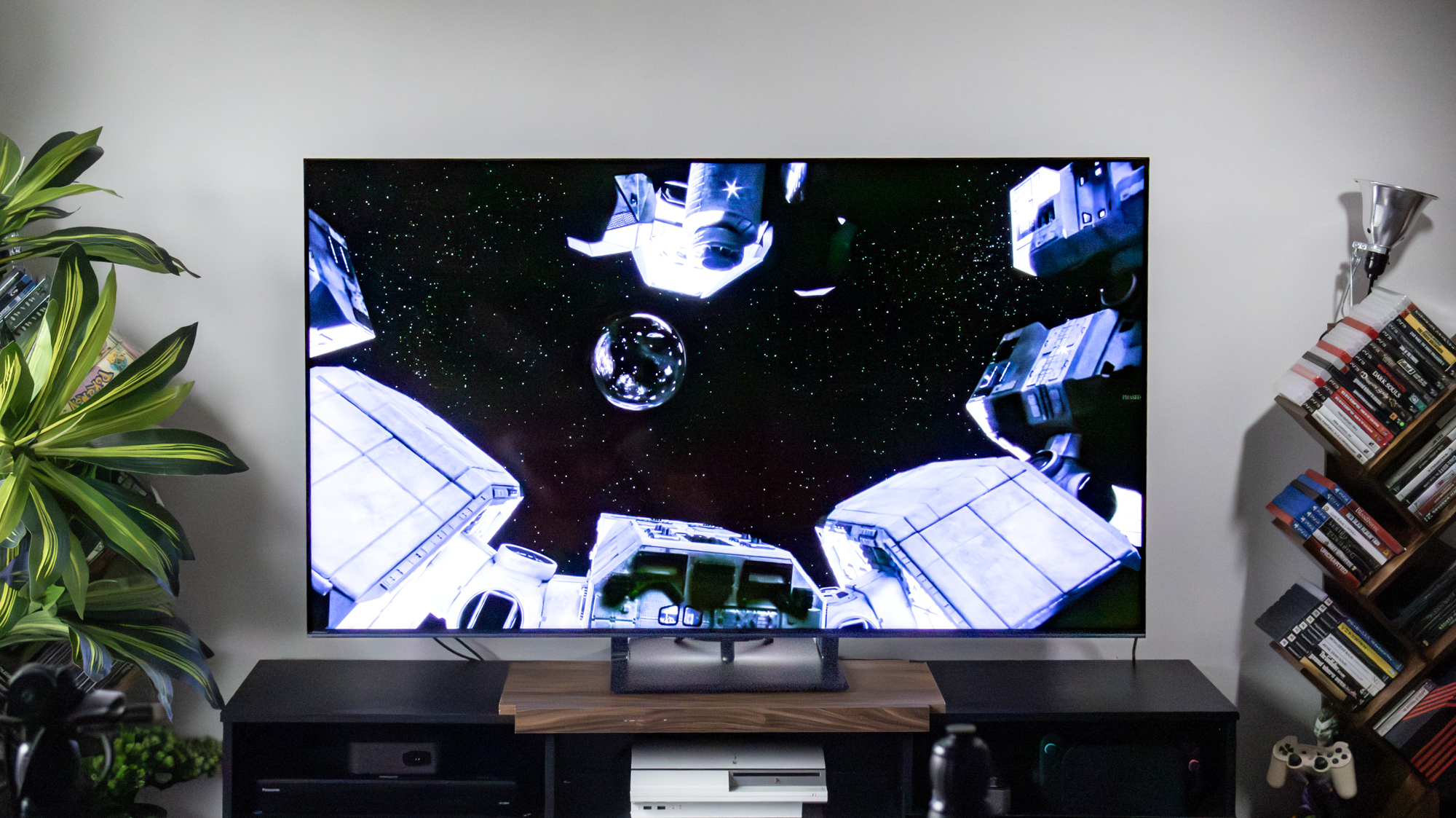
We tested the Hisense U75QG in its 65-inch configuration. Some variations occur across sizes, notably dimming zones and panel technology. According to some sources, higher TV sizes use a VA panel over the IPS panel most commonly found on Hisense TVs, but this is very rare.
Get instant access to breaking news, the hottest reviews, great deals and helpful tips.
The price of the Hisense U75QG puts it in hot competition with the TCL QM7K, which is currently $100 more in the 65-inch configuration. The 65-inch Samsung QN70F is another great counter to the U75QG, but it’s currently $50 more than the Hisense model.
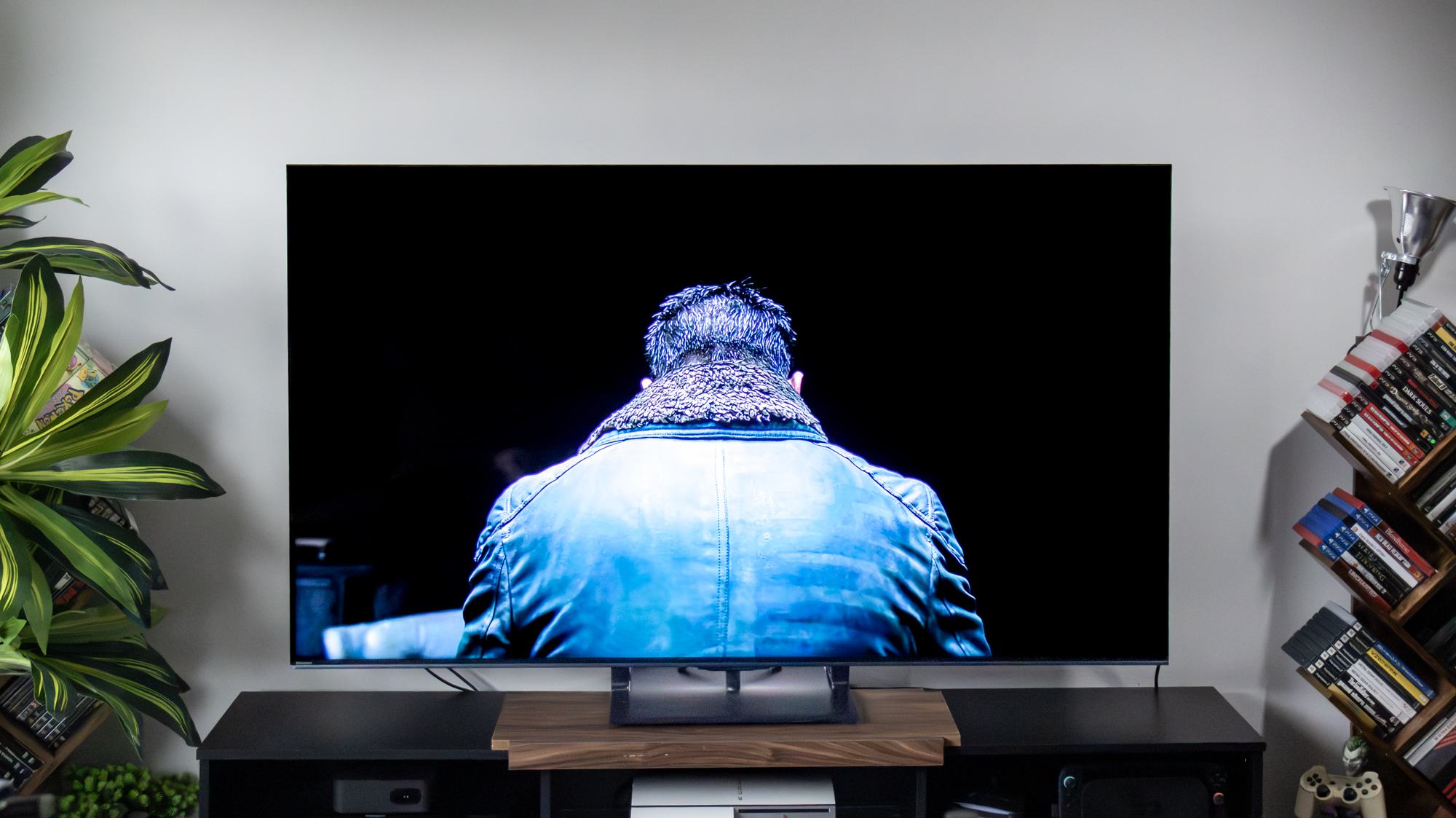
This is why the Hisense U75QG stands out in the mid-range Mini-LED market, as it is expertly priced against many of its closest rivals. It punches well above its price.
Hisense U75QG Mini-LED TV review: Design
Unlike some of the best OLED TVs, the Hisense U75QG has a thick frame and is heavy. The 65-inch model measures about 6.8 inches deep and weighs 49.6 pounds, so you’ll probably want an extra pair of hands when setting it up in your living room.
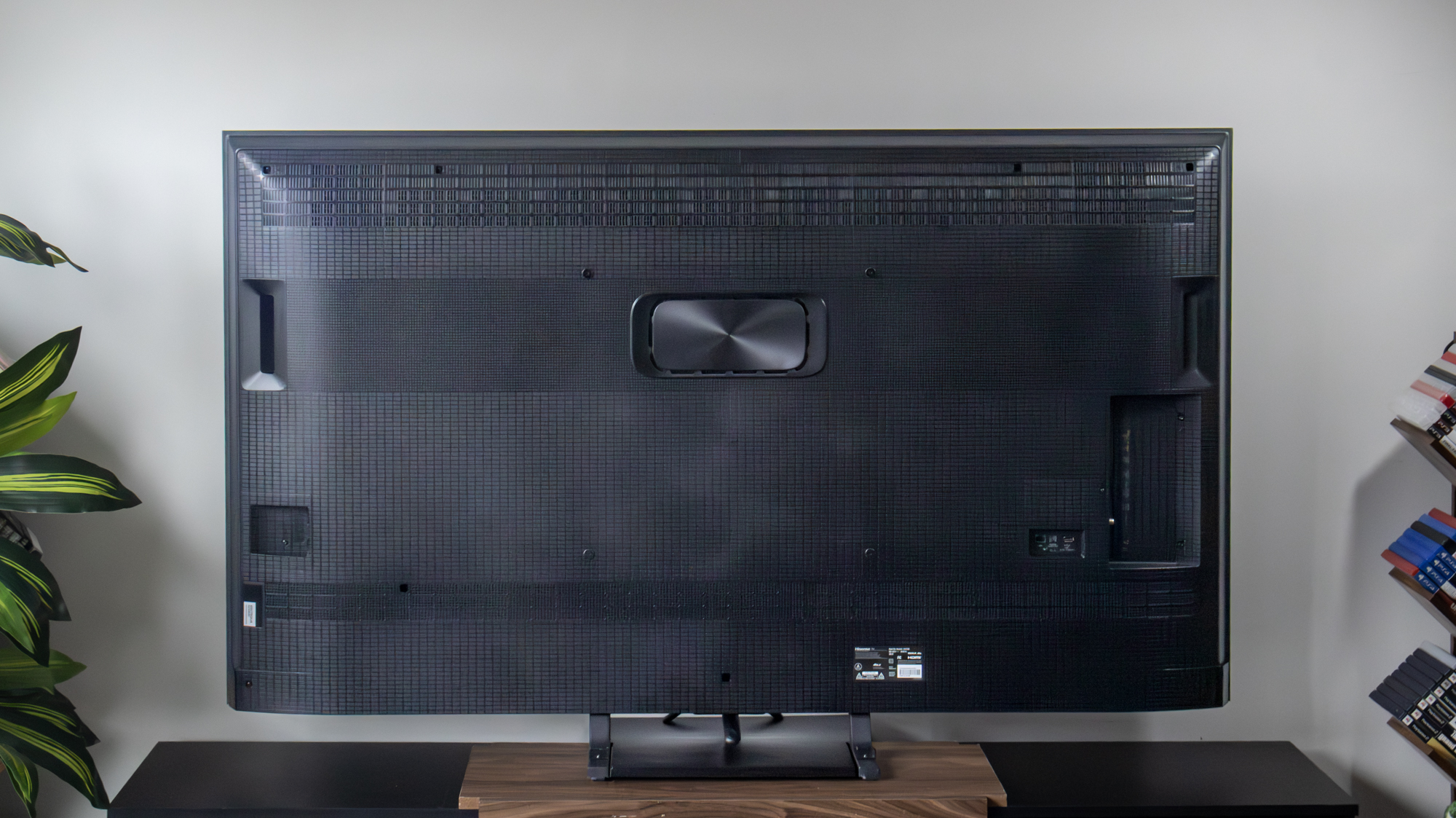
Speaking of setting it up, the Hisense U75QG is streamlined enough, but you will need a screwdriver to attach its base. It uses two feet and a wide rectangular plastic piece that attaches over the legs. It’s a lot like the pedestals on Samsung’s TVs, except those have legs that attach to the back of the TV without any screws.
Because it’s mostly plastic, the build quality of the stand could definitely be improved. It feels a little cheap, and it’s hard to tell if the base of the stand is attached correctly to the legs. It would be nice if the U75QG came with a metal base to stand out, but I did like how compact the legs are to each other. This makes it easy to place on smaller surfaces.
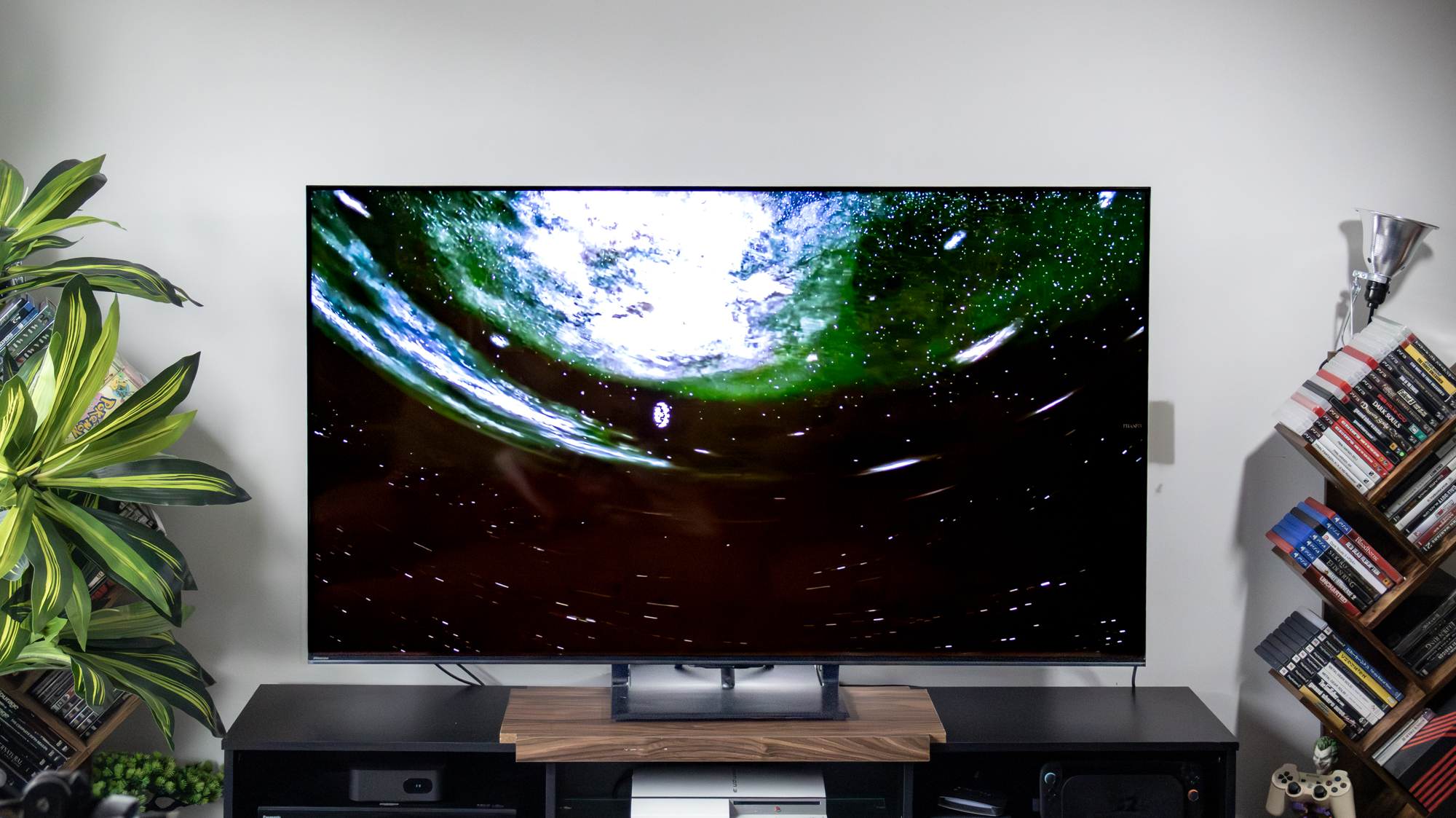
The other major design flaw is its anti-glare coating — it’s just not strong enough. While watching movies during the day, the U7G suffered from glare that washed out the colors and black levels. For the price, this isn’t unexpected, but it’s an area that Hisense should seek to improve in 2026 and beyond.
Hisense U75QG Mini-LED TV review: Ports
The Hisense U75QG includes a full array of ports on the left-hand side of the TV’s rear. Among them are four HDMI 2.1 inputs, one of which is an eARC-compatible port, allowing for soundbar connections via HDMI. This is already a step up from the Hisense U8QG, which comes equipped with only three HDMI 2.1 ports and one USB-C.
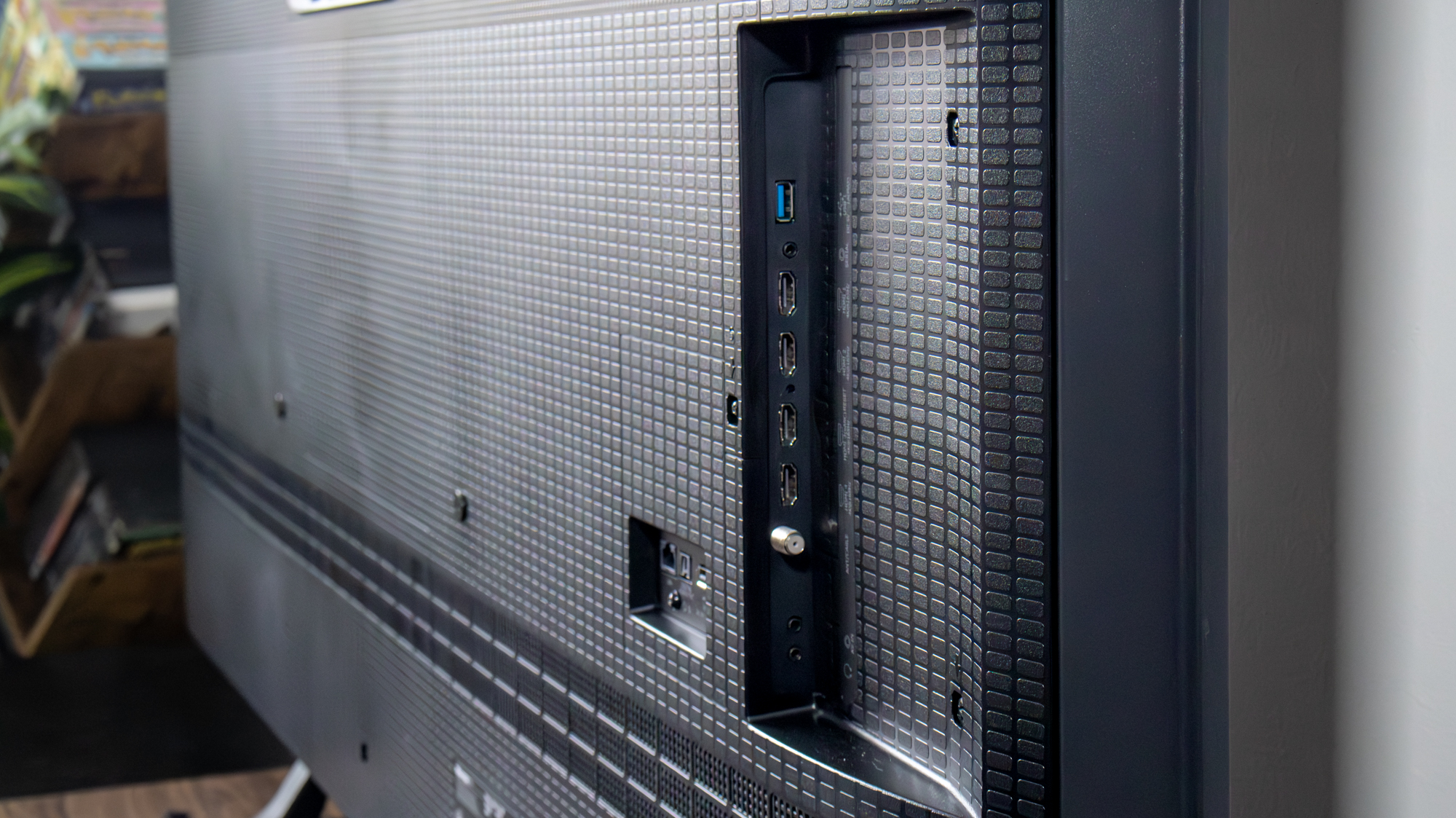
The U75QG also includes two USB ports (one USB 3.0 and one USB 2.0), a headphone jack, optical digital audio output, LAN port, and RF input. It also includes a built-in ATSC 3.0 tuner, allowing you to access NextGen TV OTA channels and 4K broadcasts.
The Hisense U75QG also has Wi-Fi 6E support, which offers slightly enhanced internet connectivity, provided your router also supports this functionality. Bluetooth 5.3 support ensures more stable wireless connections to various devices, like Bluetooth speakers and headphones. This is a major plus for those who don’t want to connect a soundbar to the TV via HDMI.
Hisense U75QG Mini-LED TV review: Performance
The Hisense U75QG has spectacular picture quality. I was awed by its immense brightness and HDR performance in movies like “Blade Runner 2049,” “Oppenheimer,” “The Batman,” and “Interstellar.”
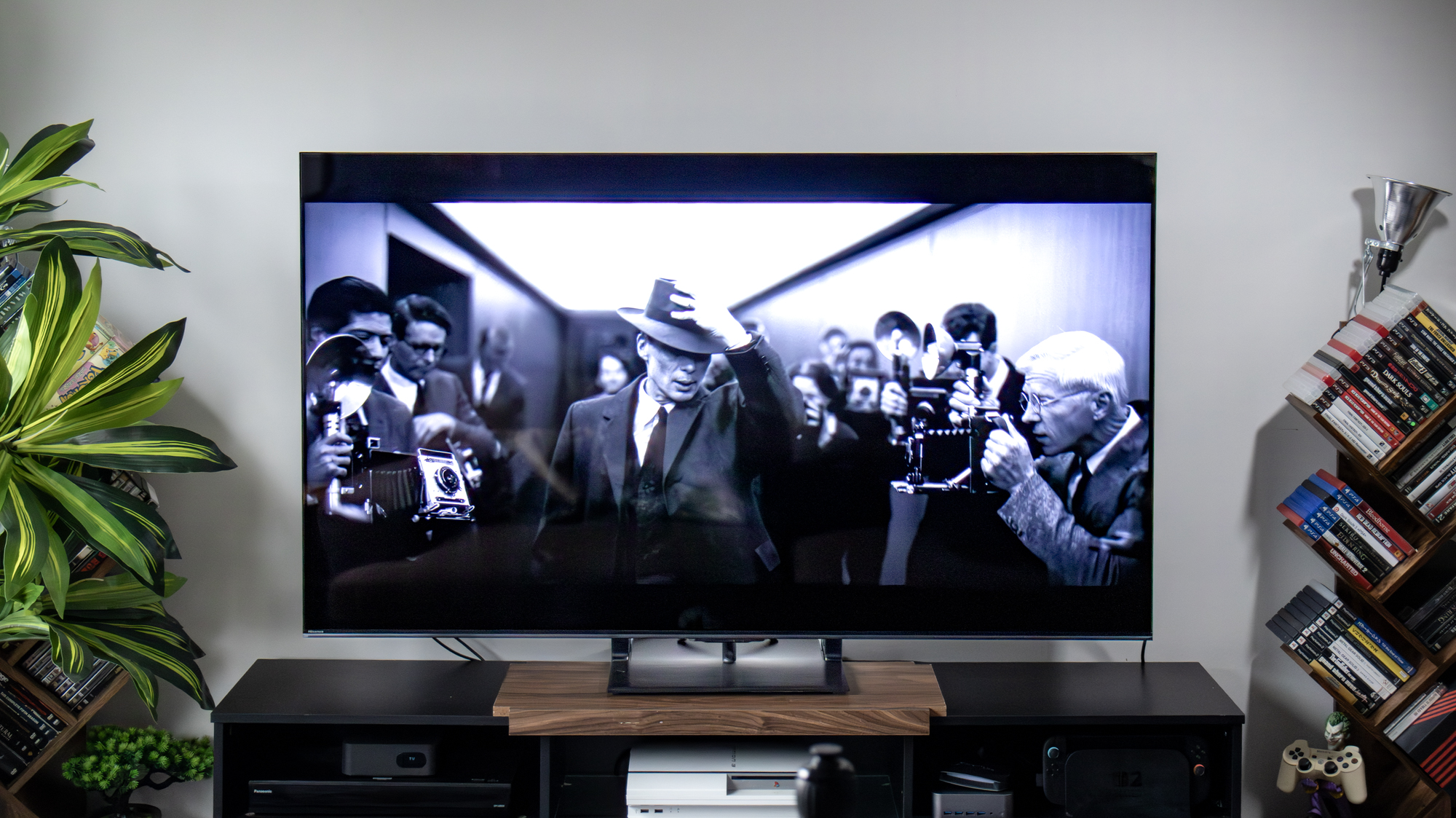
The latter two movies were particularly ideal for testing the U75QG’s contrast control and performance in lifelike shadows. While it doesn’t offer OLED qualities for inky blacks, the U75QG still outshines many of its rivals thanks to its incredible HDR brightness. However, glare is still noticeable in pitch-black scenes, which means bright room use will vary.
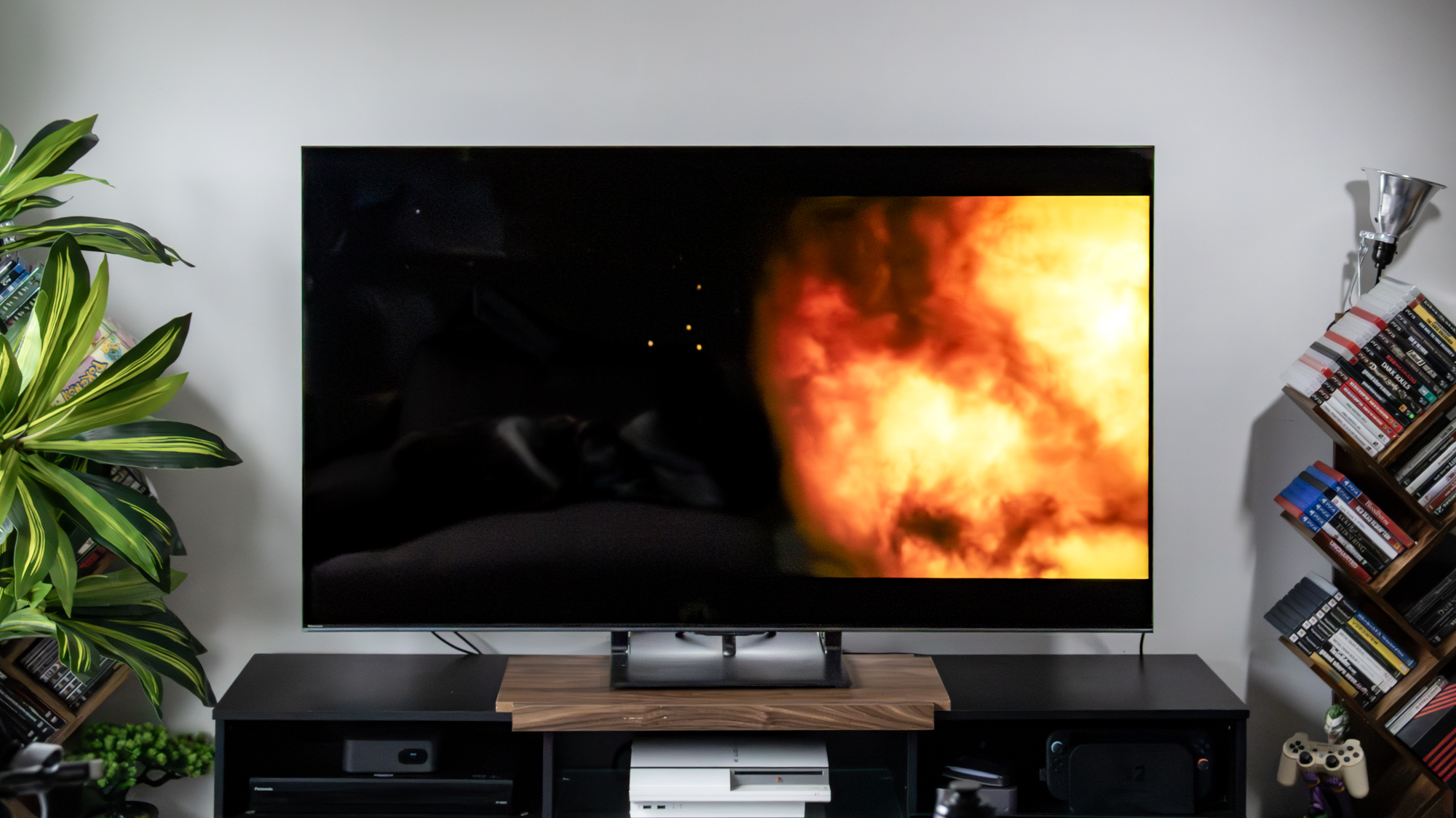
I was also surprised by how precise its local dimming was for a Mini-LED TV in this price range. I set local dimming to High and disabled all of its energy-saving settings to get the best performance. This equated to improved highlights, making HDR movies pop even more. The downside to this is that you will see subtle blooming in subtitles (the local dimming is good, but it can’t work miracles); however, I think the tradeoff is worth it.
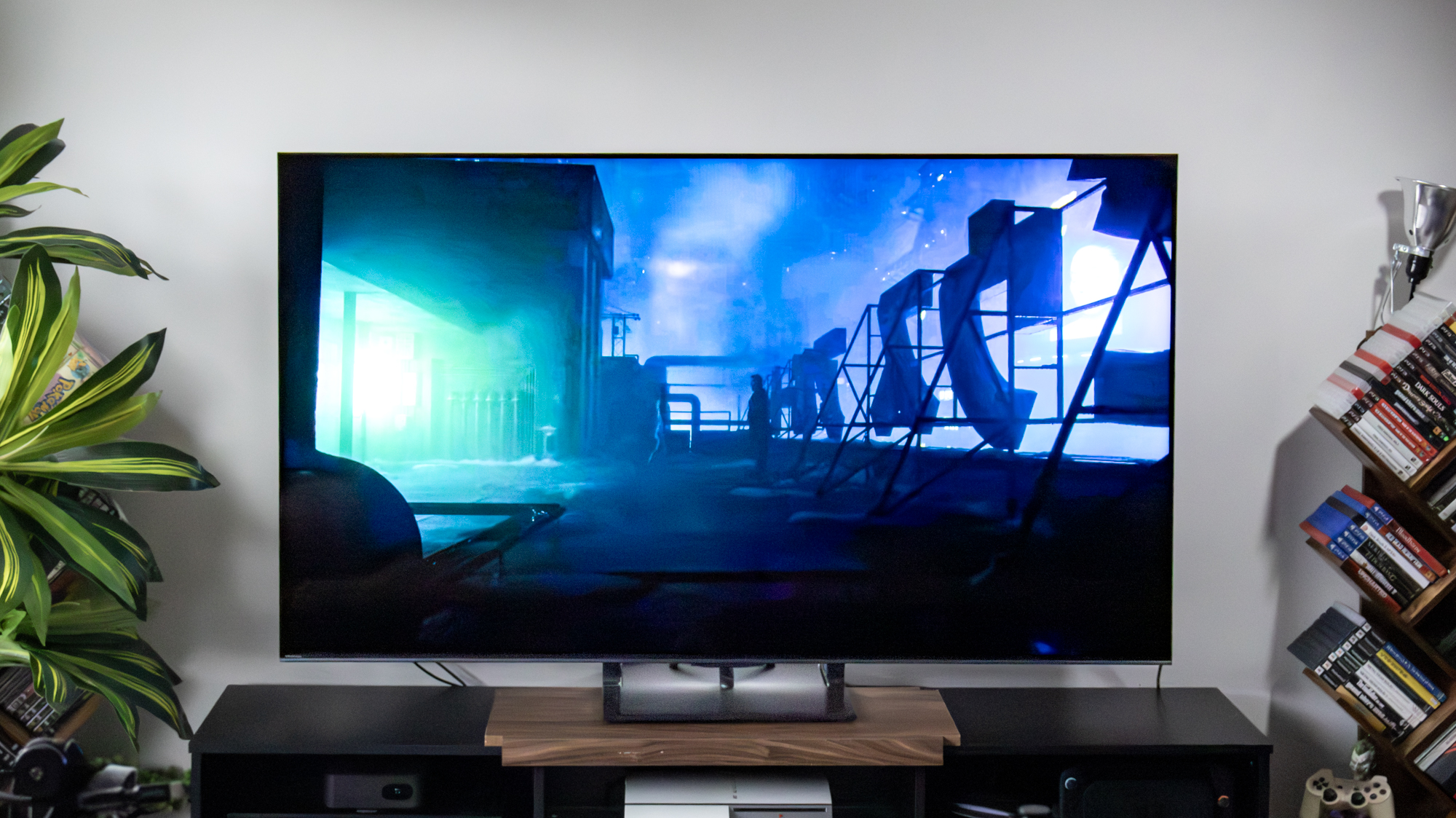
Although the U75QG doesn’t have the most robust color volume, it still handled vibrant scenes in “Blade Runner 2049” very well. Colorful animated movies still leaped off the screen, including “Spider-Man: Across the Spider-Verse,” “The Super Mario Bros Movie,” and “Suzume.”
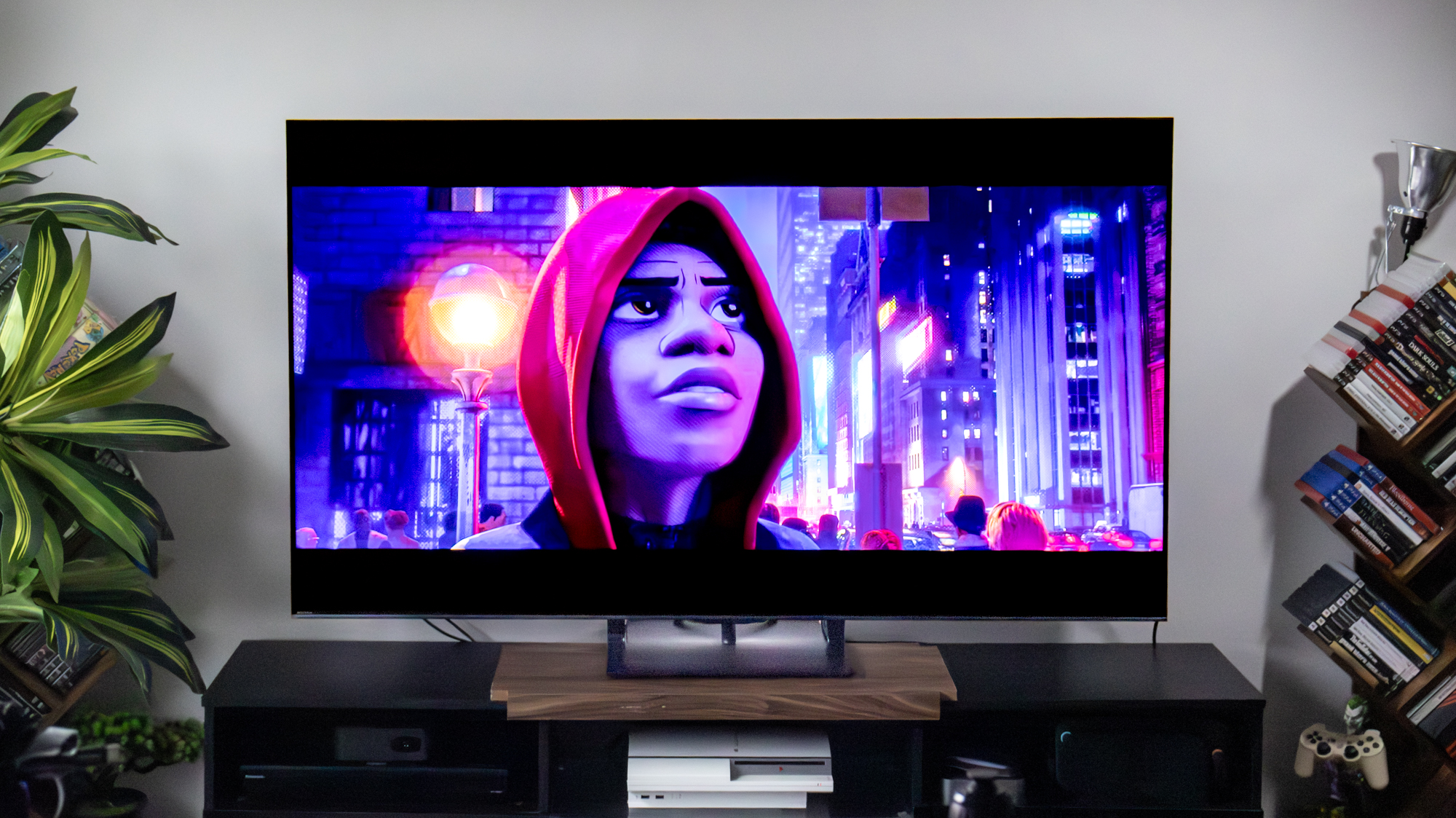
Picture quality was surprisingly solid and improved on the U75QG over its predecessor, but similar complaints persist, such as its highly reflective screen in brighter environments and poor off-axis viewing. If you’re watching in a brighter, more ambient-rich room and sit at an angle, the U75QG might not be for you.
How we test TVs
We follow a standard testing protocol for every TV we review at Tom’s Guide. Our benchmarks include a series of technical and subject tests designed to rate the set’s performance.
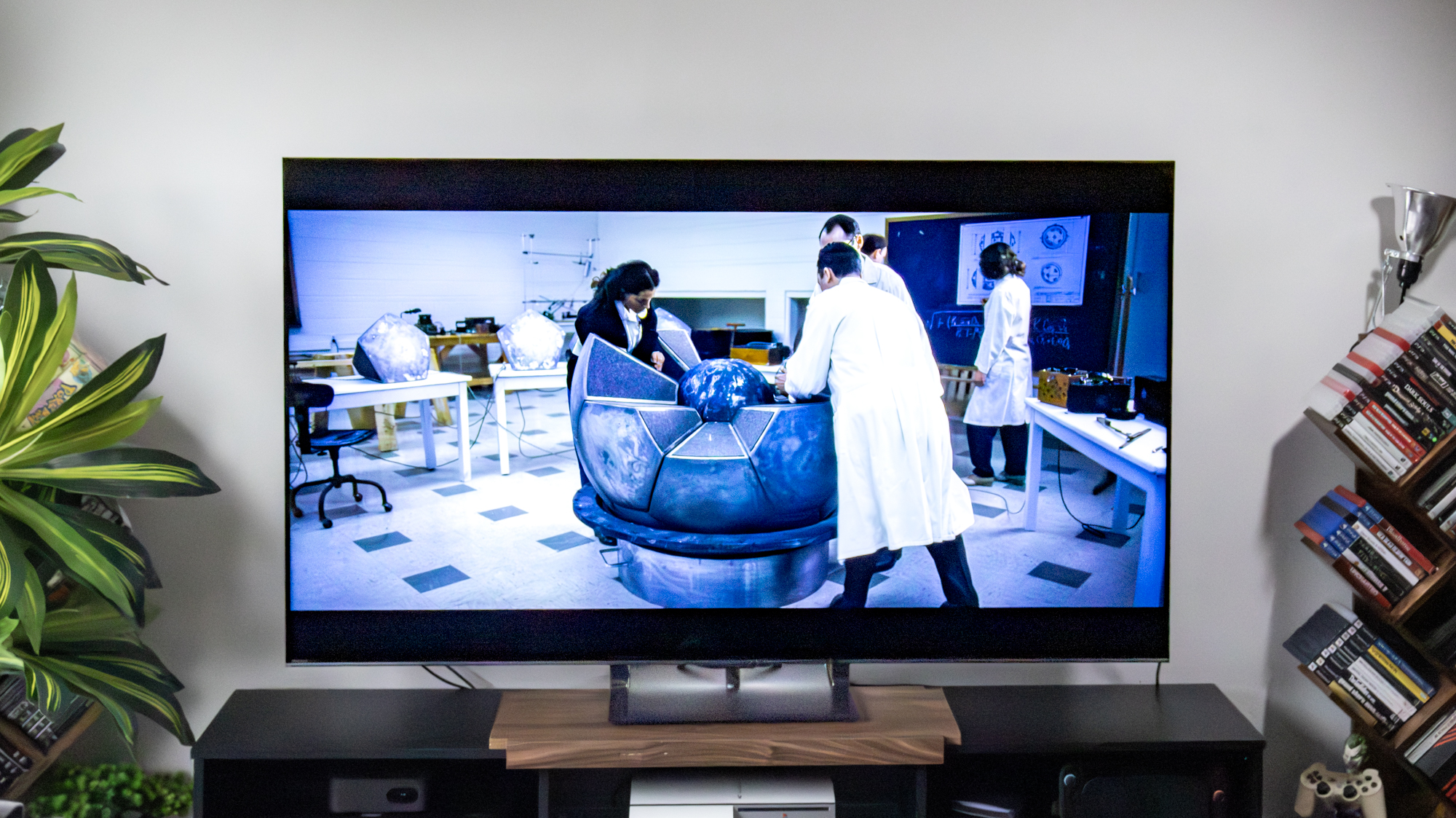
For our technical tests, we use a Jeti spectraval 1501-HiRes spectroradiometer, a Klein K10-A colorimeter, a Murideo 8K-SIX-G Metal pattern generator, and Portrait Displays’ Calman TV-calibration software to take measurements. We also use a Leo Bodnar 4K Input Lag Tester for determining the TV’s gaming prowess.
Hisense U75QG Mini-LED TV review: Test results
The Hisense U75QG performs well compared to similarly priced mid-range competitors and the flagship 2025 model. Here's how it fares against last year’s Hisense U7N, TCL’s QM7K, and the flagship Hisense U8QG.
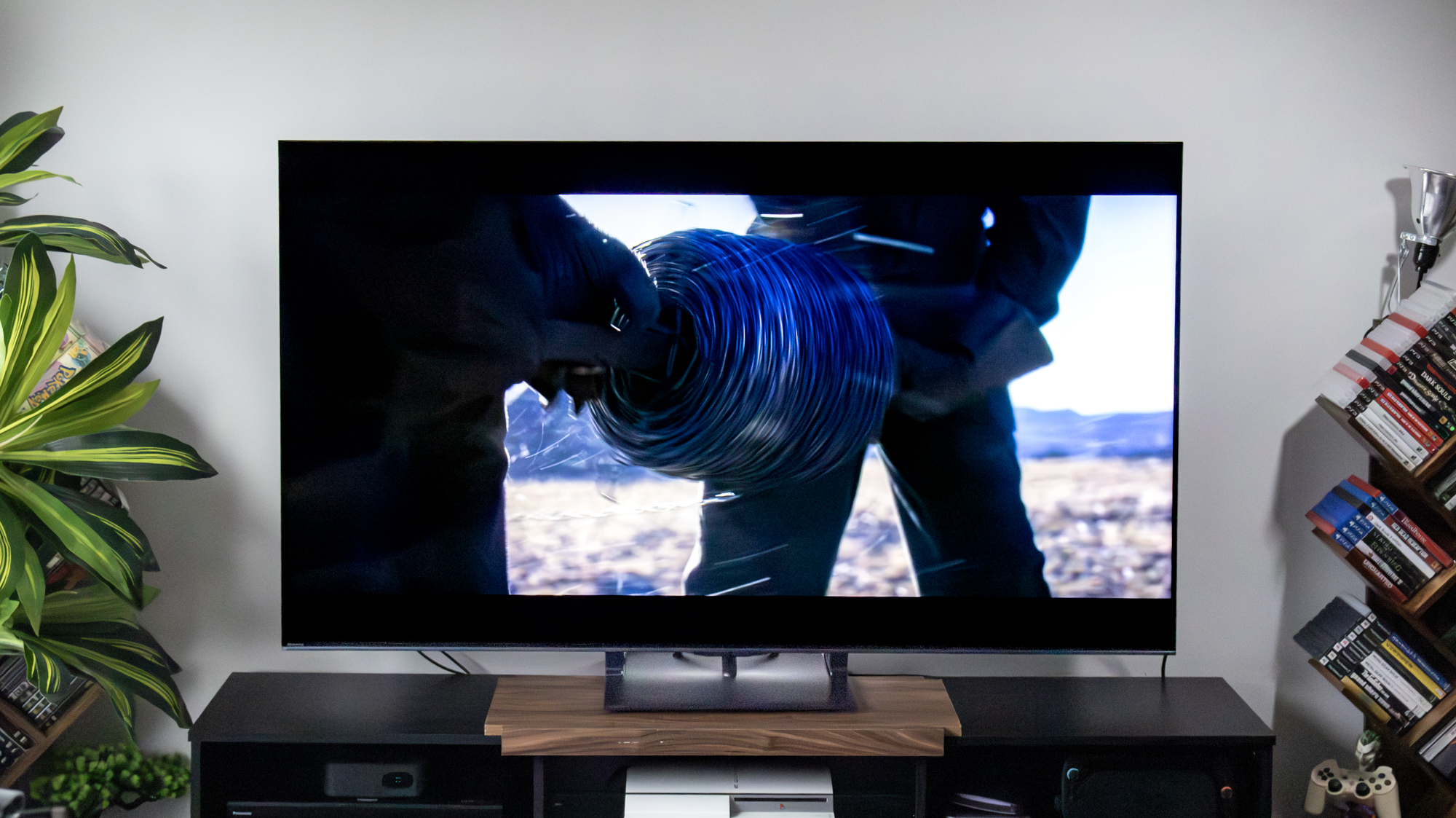
| Row 0 - Cell 0 | Hisense U75QG | Hisense U7N | TCL QM7K | Hisense U8QG |
SDR Brightness (10%, in nits) | 2,220 | 1,241 | 257 | 2.908 |
Delta-E (lower is better) | 2.8 | 1.6 | 1.4 | 2.4 |
Rec. 709 Gamut Coverage | 99.58% | 99.47% | 99.17% | 99.30% |
HDR Brightness (10%, in nits) | 3,338 | 1,464 | 2,350 | 3,916 |
UHDA-P3 Gamut Coverage | 94.9% | 95.16% | 96.98% | 97.53% |
Rec. 2020 Gamut Coverage | 76.19% | 75.32% | 79.22% | 83.98% |
Input latency (in milliseconds) | 9.8 | 13.2 | 13.1 | 9.7 |
Hisense has made several tweaks to this mid-range Mini-LED TV, raising the bar in terms of input latency and brightness. Color accuracy didn’t improve that much over last year, but these are still solid enhancements.
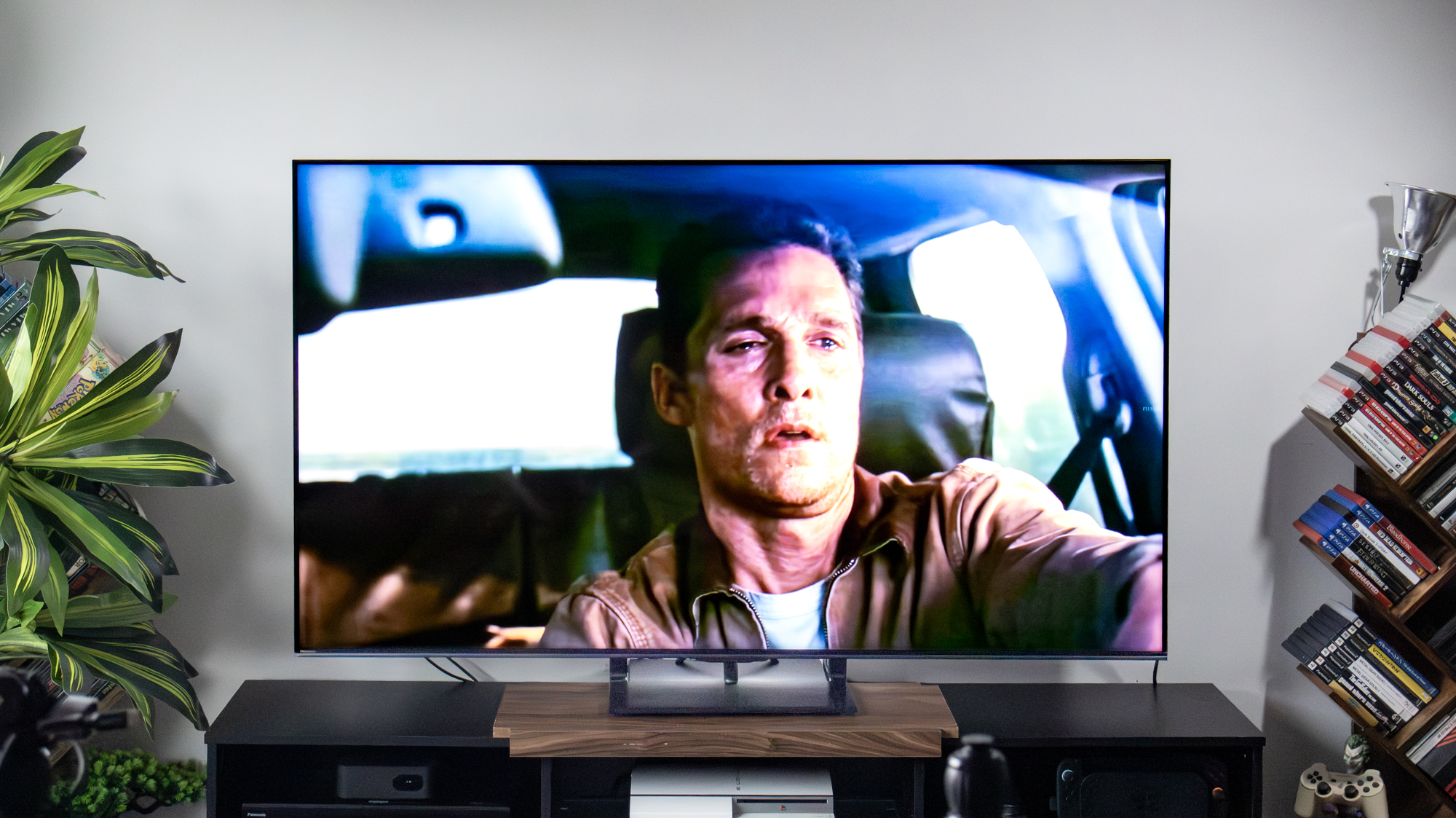
You can also see how well it stacks against the competition. The U75QG outperforms the QM7K in SDR brightness, HDR brightness, and input latency. Once again, its color volume in HDR isn’t the most ideal when compared to the QM7K or even the flagship U8QG, but it still fares well.
The U75QG is outclassed by every TV on the list in our Delta-E tests, which pertains to color accuracy. The variances between the U8QG and U75QG are imperceptible, but they’re still low for good-enough color accuracy. Anything under a score of four is ideal, but it would be nice to see improvements to its color volume.
Hisense U75QG Mini-LED TV review: Gaming
I’m not overstating it when I say the U75QG was a total blast for gaming. It’s one of the few Mini-LED TVs this year that offers a 165Hz refresh rate, making it an incredible choice for PC gamers. It’s also equipped with four HDMI 2.1 ports, as well, so you’re not locked to just two external devices, and its low 9.8ms input latency is perfect for fast-paced gaming.
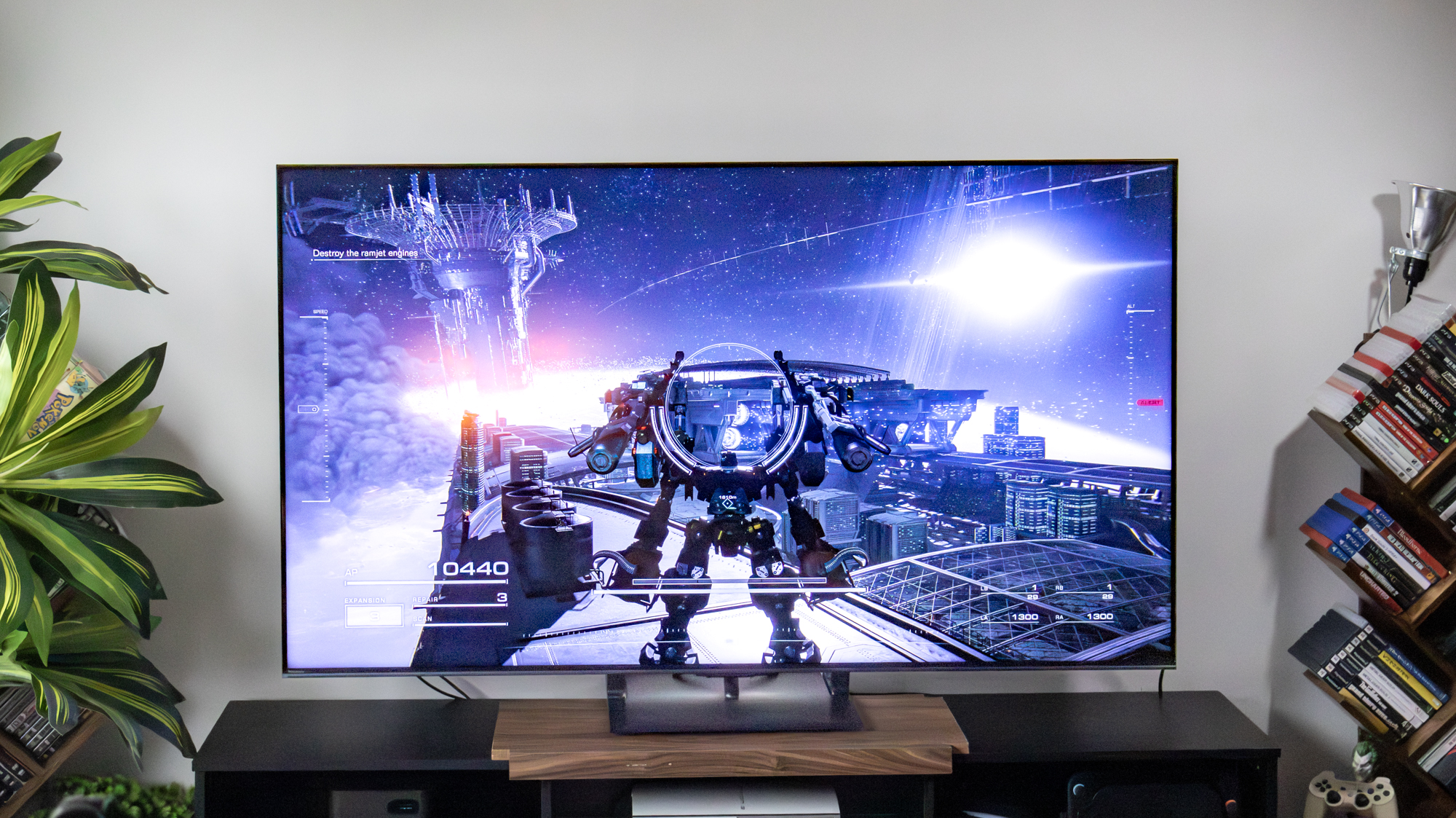
On PS5, I played “Armored Core 6” and “Silent Hill f.” Both games looked striking, with colors popping on this display. Both of these games tested the U75QG with their own bright and vibrant colors. “Armored Core 6” was especially appealing, given its faster gameplay, while “Silent Hill f” offered me a better perspective of its contrasts in darker scenes.
The U75QG is no OLED TV, but it still offers incredible gaming support where it counts. I did throw a few PC games at the TV, which highlighted some subtle blurring and “trailing” at higher refresh rates. However, since most people will be playing on consoles at 4K/120Hz, this isn’t too serious an issue.
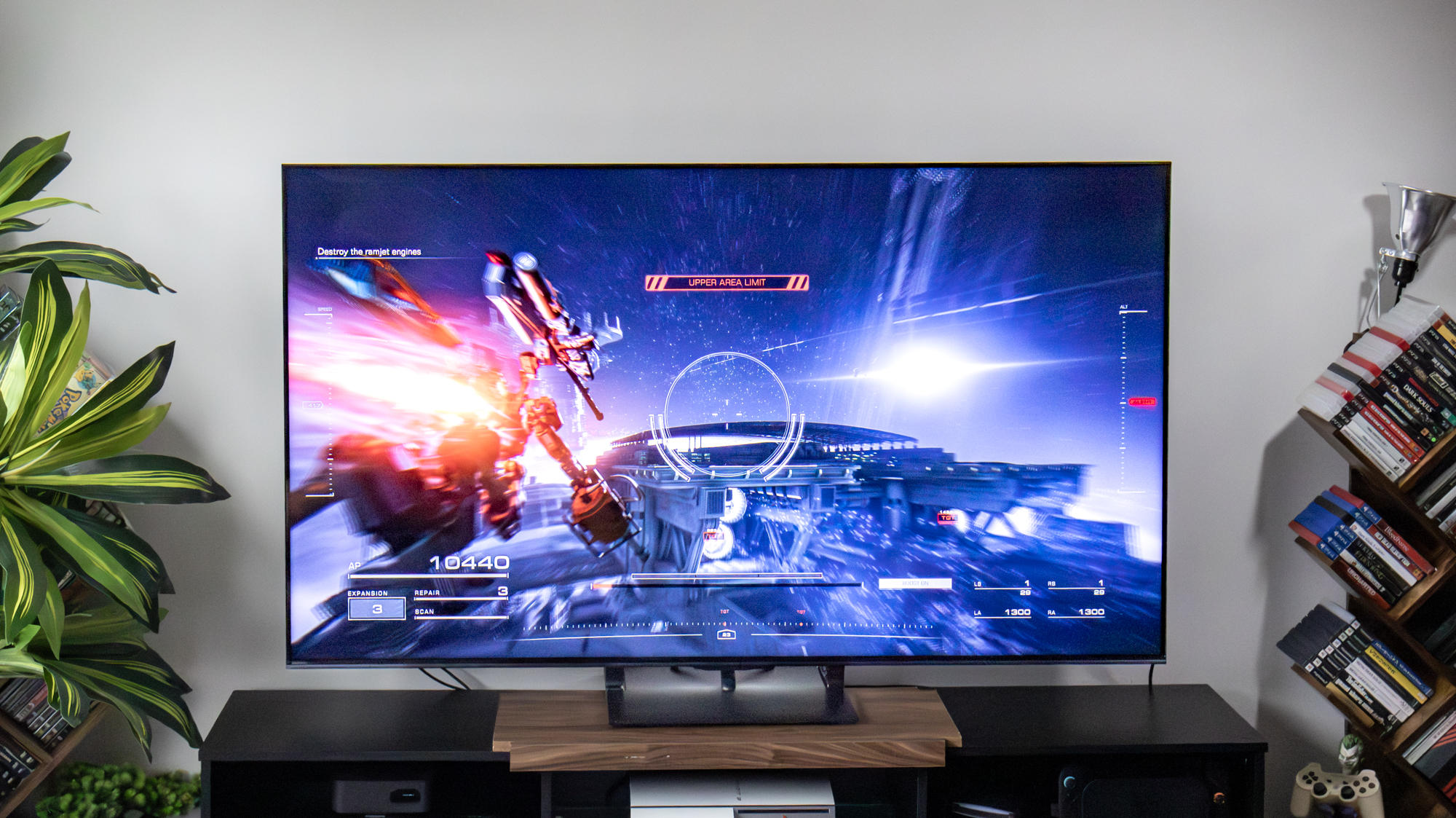
I walked away from this review feeling like the Hisense U75QG is one of the best gaming TVs for the price. You’ll get better pixel response times from an OLED TV, of course, but the U75QG offers some of the lowest input latency for a Mini-LED TV this year and has four HDMI 2.1 ports, making it an exceptional value for gamers.
Hisense U75QG Mini-LED TV review: Audio
Audio on the U75QG is a mixed bag. While it does have a wide sound stage, the built-in speakers lack refinement. Audio performance is serviceable, reaching high levels at just 20 (out of 100), but it doesn’t sound as immersive as other TVs I’ve tested.
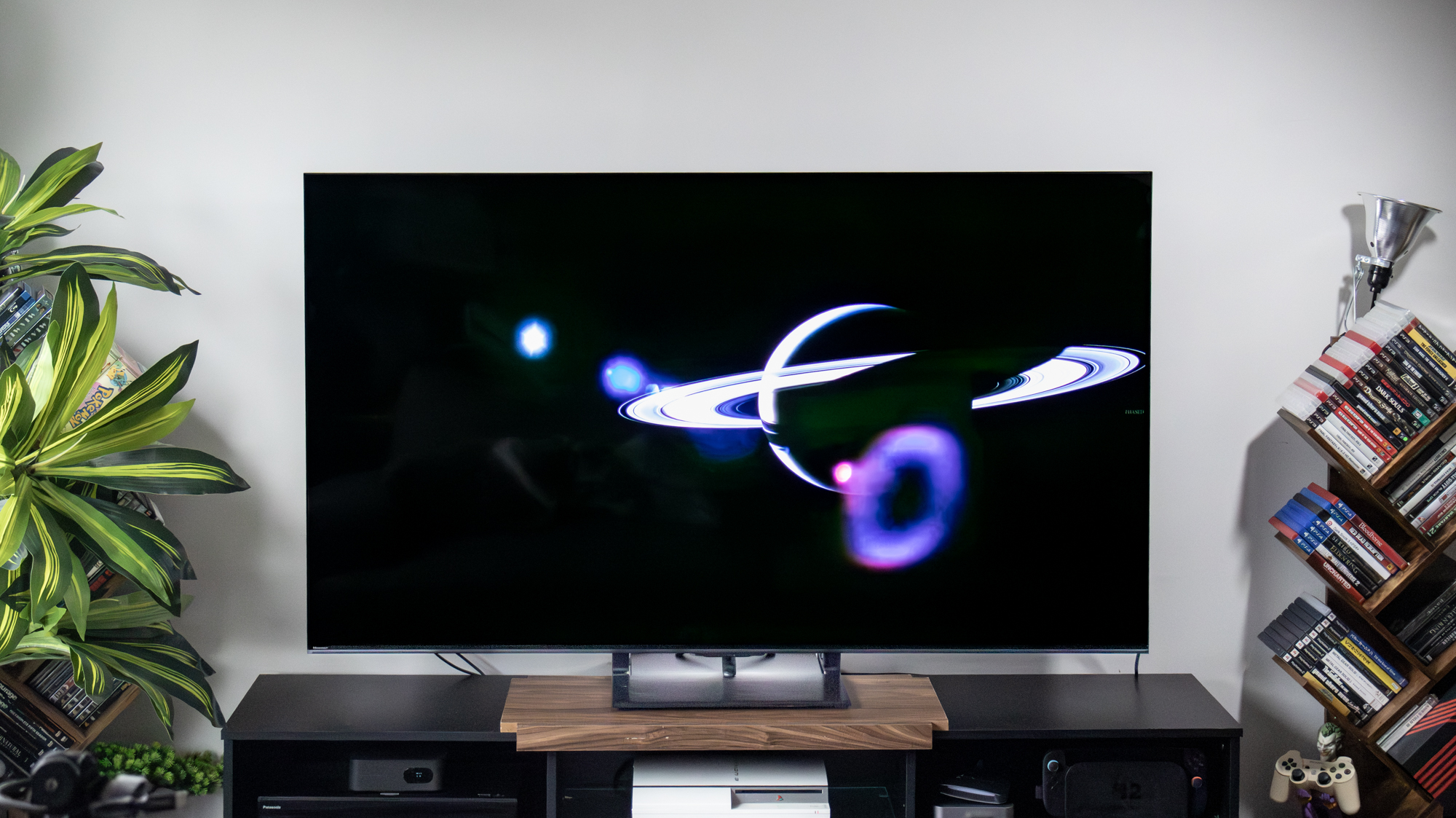
Bass notes boom far too much on the U75QG, which means dialogue-heavy scenes can be hard to hear, and mids/highs sound thin or slightly distorted.
It’s tough because I wanted to like the speakers on the U75QG, but the lack of clarity makes them hard to enjoy.
Hisense U75QG Mini-LED TV review: Interface and apps
The Hisense U75QG runs on Google TV, one of our favorite TV interfaces. It’s a fantastic OS, offering many of the best streaming services and a multitude of free content to enjoy. I even noticed a new app called Hisense Channels after setting up the TV, so Hisense has its own curated list of free content if you’re looking for that.
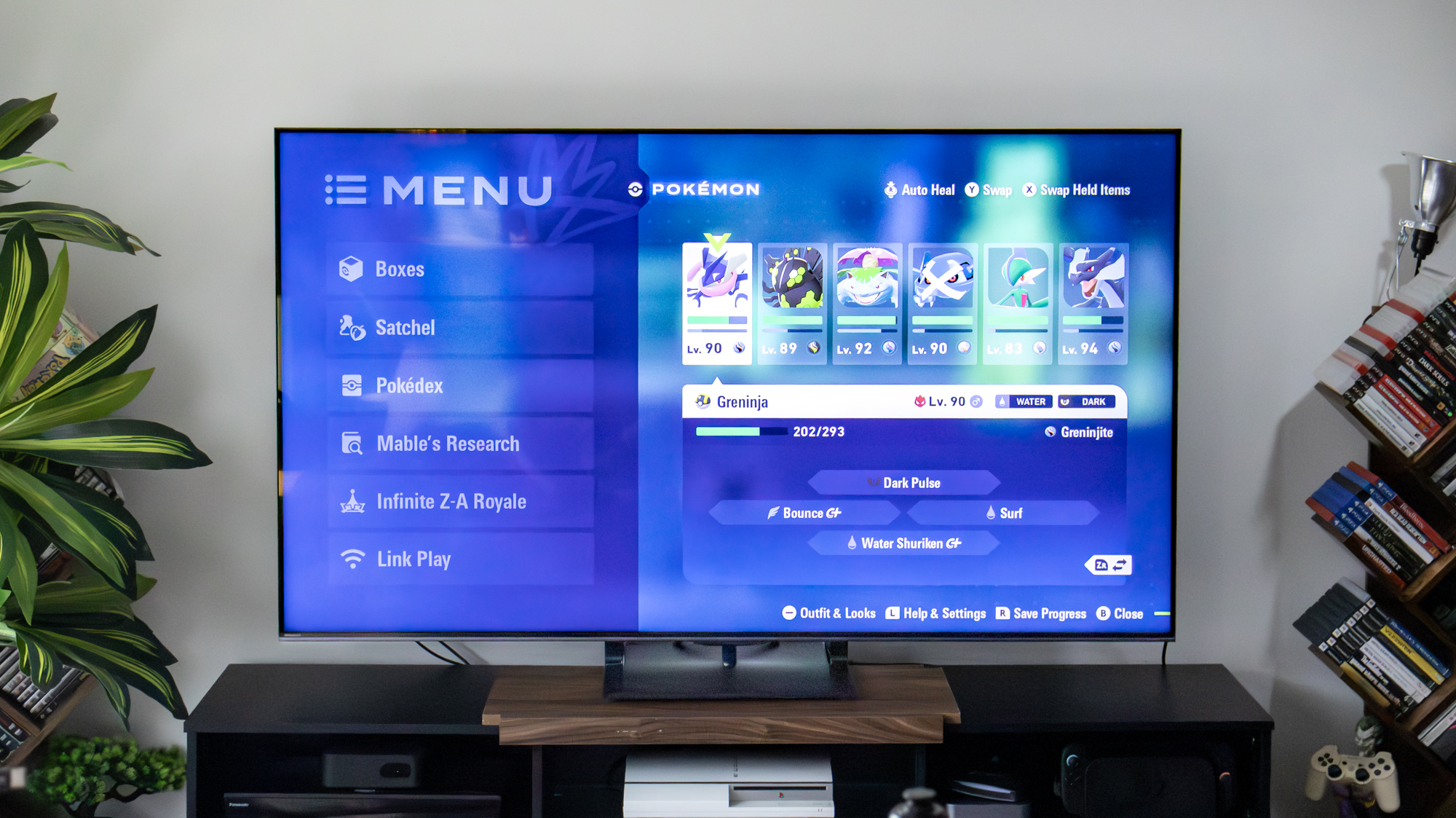
One major change on the U75QG is a more robust Google Home integration. Now, you can fully interact with Google and ask to perform specific tasks, such as turning off lights or closing the shades. That means you can forgo devices like the Google Home Hub if you’re so inclined, which is pretty great if you’re big on smart home improvements.
A streamlined Google TV setup process also makes unboxing and initial startup a total breeze. It took me no more than 30 minutes to get straight into my content, which wasn’t the case last year. It also offered super slick and speedy navigation, as is typical for Google’s interface.
Hisense U75QG Mini-LED TV review: Remote
Hisense’s remote hasn’t changed too much since last year. It’s still lightweight and a tad long, wrapped in a chrome silver body that stands out. I prefer shorter designs, like Samsung’s and Roku’s remotes, but the Hisense version isn’t terrible. It even has backlit buttons, which few other remotes offer.
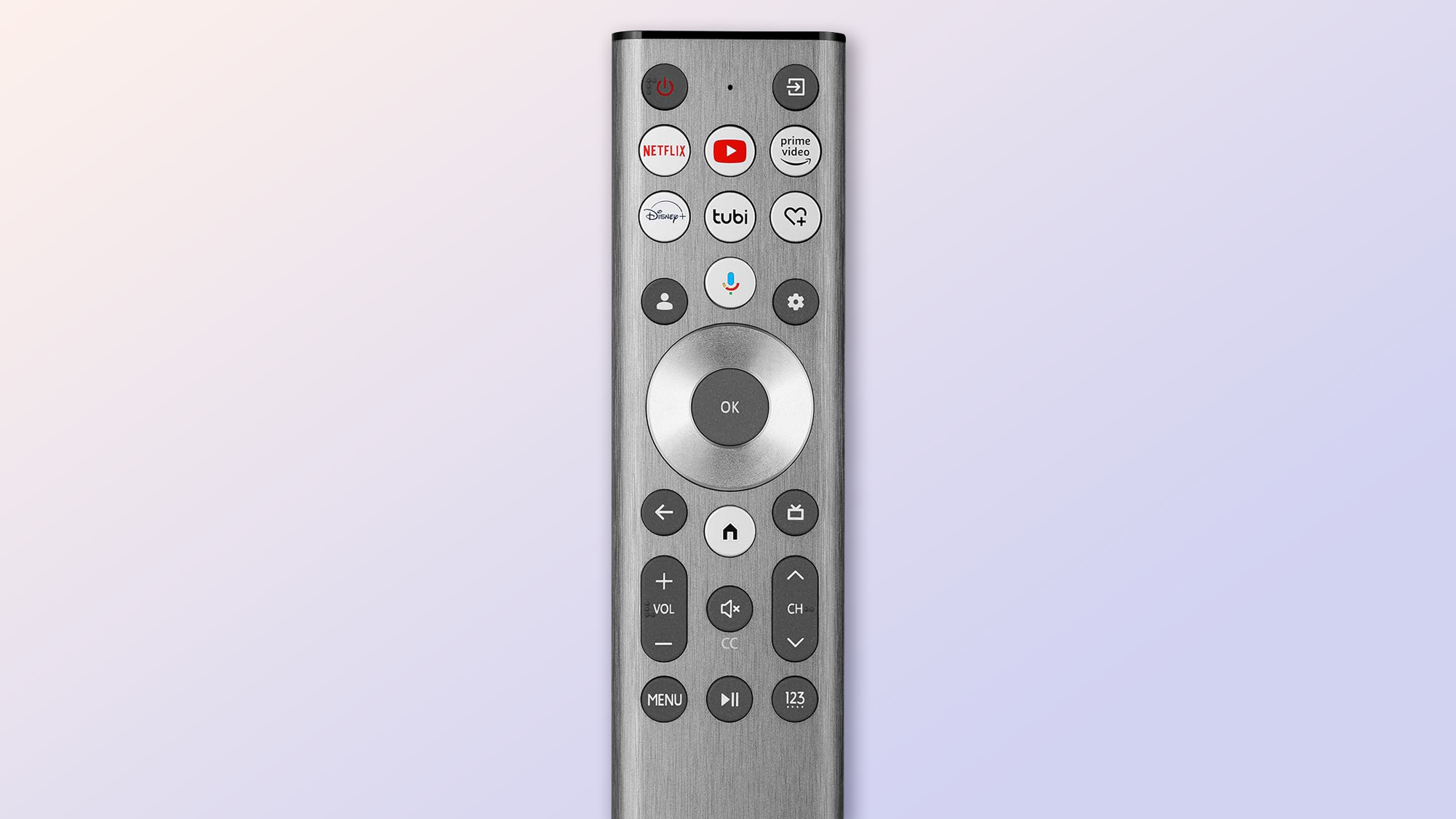
The remote includes quick access buttons to streaming services, such as YouTube, Tubi, Prime Video, and more. Again, these haven’t changed from last year’s remote, so it would be nice if it included additional buttons to other services, such as HBO Max and Hulu. A quick access button to gaming settings could also go a long way.
Overall, I have no complaints with the U75QG’s remote. It gets the job done and has most of the buttons I need for daily content consumption, settings changes, and the like.
Hisense U75QG Mini-LED TV review: Verdict
The Hisense U75QG backs its excellent gaming features up with brilliant performance in luminance and input latency, making it an ideal choice for budget buyers and gaming enthusiasts alike.
It’s also one of the few budget TVs to launch this year with a 165Hz refresh rate. This might be null and void for console players right now, but it could offer a future-proofed solution for next-gen devices. It’s still too early to tell at this time, but it’s definitely something to consider if you’re on the fence about the TCL QM7K vs the Hisense U75QG.
I also find the U75QG a better option over the flagship Hisense U8QG. While the latter TV is similarly well-priced with stellar performance (especially in brightness), it lacks a full set of HDMI ports, offering just three and a USB-C input. The 65-inch model is also $300 more expensive than the U75QG, despite relatively similar performance.
I did find the reflective screen distracting, but this was a major pain point on the U8QG as well and won’t be as much of an issue if you watch in darker environments. Unfortunately, no matter how you slice it, the sound system leaves a lot to be desired, but that can be fixed by hooking the U75QG up to one of the best soundbars.
Looking past these complaints, the U75QG remains a hit. It’s one of the best budget TVs of 2025, especially for 65-inch models, and offers excellent picture performance for the price.

Ryan Epps is a Staff Writer under the TV/AV section at Tom's Guide focusing on TVs and projectors. When not researching PHOLEDs and writing about the next major innovation in the projector space, he's consuming random anime from the 90's, playing Dark Souls 3 again, or reading yet another Haruki Murakami novel.
You must confirm your public display name before commenting
Please logout and then login again, you will then be prompted to enter your display name.
